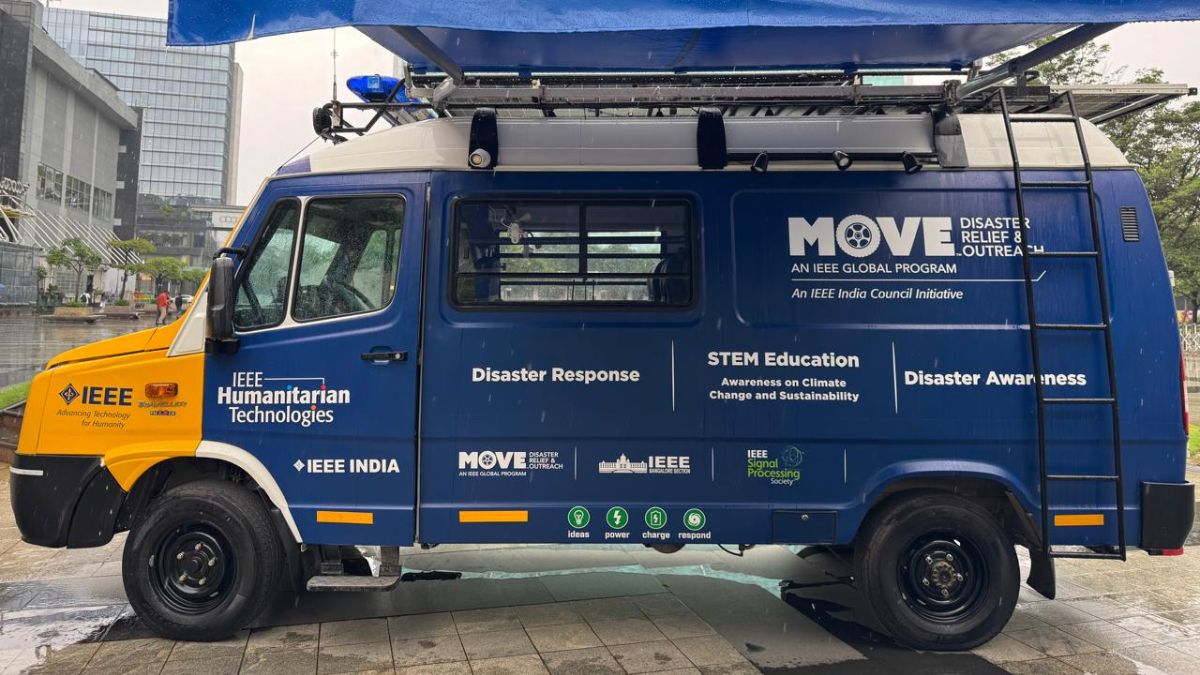IEEE launches custom MOVE vehicle in India for disaster relief and STEM outreach

After having made its mark in the United States, IEEE’s Mobile Outreach Vehicle (MOVE) will be deployed for the first time outside the US in India. This vehicle was deployed in disaster relief operations in the US and IEEE, which is one of the world’s largest technical professional organisation, has worked closely with the Red Cross in the US to deploy it successfully at many disaster relief operations there, including the forest fires in California in the US. To begin with only one vehicle will be initially launched in India. In the US, a total of three vehicles have been in operation ever since 2016 and have been deployed regularly.
Launched in Bengaluru, IEEE President and CEO Kathleen Kramer told THE WEEK that the vehicle has been especially customised for Indian road conditions. The vehicle will work in different terrains and will be able to provide constant communication in case a disaster strikes. The vehicle has been built on a rugged Force Traveller chassis and is designed to traverse India’s diverse terrains. The IEEE MOVE India Vehicle has a modular design, power system, and advanced emergency communication suite to help provide the technology and communication tools to relief workers in case there is a disaster. “When there is no disaster, the vehicle will be used for outreach programmes, especially the spread of STEM education and sustainability awareness,” remarked Kramer.
The IEE MOVE India vehicle (FORCE Traveller T2 DV 2020) has a customised air suspension system with air springs for smooth transit, minimising vibration impact on electronic systems and batteries. It also has an integrated AC Unit with a mounted evaporator, a roof rack and ladder access for secure storage panels, antennas or mast systems. Power sockets are also available to connect AV gear, demo kits or charge devices externally during field camps. It also has built-in compartments for battery enclosures, inverter set up and structured cabling. It is designed for 6-8 hours of continuous field deployment without external power dependency.
The vehicle also has a power subsystem, which is a professionally engineered hybrid solar solution, designed for mobile deployment in variable field conditions. Optimised for off-grid operation, mobile STEM education and disaster relief support, it also has the flexibility to draw external power when required.
The vehicle has a hybrid system wherein inverters support solar, battery and external AC input, ensuring continuous uptime. The solar array is also optimised to support partial recharging and extended runtime for typical field operations.
With a robust field-grade communications suite, it is designed for disaster response, mobile connectivity and community digital outreach. The vehicle enables immediate 4G/LTE connectivity in disaster-hit or network dark areas. VPN ready encrypted communications is also available for sensitive field coordination and a central dashboard control for live monitoring and firmware updates. The vehicle also has a HAM Radio Suite and has a DMR base station, antenna mast, hotspot and handheld radios.
One of the interesting features is a grid and solar-powered energy setup with a hybrid inverter and lithium-ion battery bank, delivering up to 30 hours of energy. The onboard communications include a Wi-Fi 6e antenna suite, 4G connectivity, and HAM radio systems to provide seamless, high-bandwidth communication during emergencies.
The vehicle carries interactive STEM kits aimed at educating students and communities on climate change, disaster preparedness, and sustainable technologies. The STEM program is expected to reach over 100 schools annually, beginning with operations in Karnataka, and will expand further to other states across India.
Sci/Tech